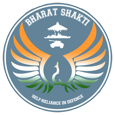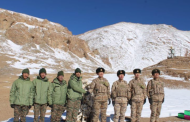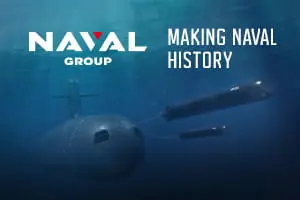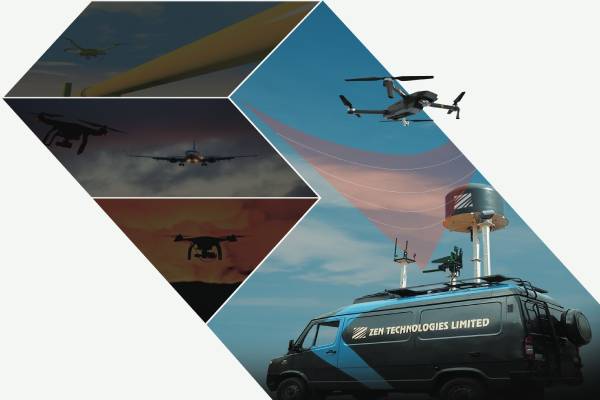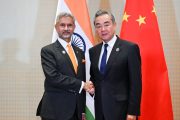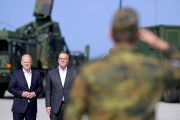Soon after the enunciation of Chapter VII of the DPP 2016 on Revitalising Defence Industrial Ecosystem through Strategic Partnerships (SP) in June 2017, the Services have begun issue of RsFI for Foreign OEMs to furnish information for manufacture and acquisition of platforms under the SP Concept. Such RFI for Submarines under Project 75 (I), Naval Multi Role Helicopters (NMRH), Naval Utility Helicopters (NUH) and their Simulators have already been issued. RFI for Single-engine Fighter Planes and Main Battle Tanks are on the anvil and will be issued soon.
This rapid pace of current developments was preceded by deep policy considerations. In Defence Acquisition, the single Business Model of the Second World War era and subsequent Cold War period, i.e. Procurement of equipment is being replaced by a spectrum of emerging Business Models, ranging from the traditional procurement of equipment, via acquisition of equipment and support, to acquisition of capability and availability. The necessity to “do more with less” and to do things “faster, cheaper, better” has also led to the exploitation of Partnerships (as pioneered by UK) and international co-operation in defence equipment (as adapted by NATO and EU and many international defence treaties).
The concept of Strategic Partnership and Developmental Partnership emerged as a consequence of such realisation. This was enunciated in the Report of the Committee of Experts (2015).
The word “Strategy” has Greek roots (strategia) and means “Generalship” and so a very apt term for us to use in this context. One needs to strategise only if there is uncertainty in achieving the goal with attendant resource constrains. Were it not so, there would be no need to strategise. Partnership is defined as, “The voluntarily initiated cooperative agreement between two or more entities in order to create value for the customer”.
The Committee of Experts recommended the formulation of Strategic Partnership (SP) of MoD with Indian Private Sector as opposed to the “contract” centric relationship which any procurement system maintains with suppliers. The SP concept pre-supposes a relatively long-term partnership between buyer and seller. Consequently, the concept disqualifies any short-term partnerships. In addition, SP also disqualifies those relationships that are not partnerships, e.g. arms-length type relationships. Furthermore, SP also disqualifies public provision, traditional procurement, and outright privatisation, since these forms of procurement and provision are neither relationships nor partnerships.
Once the round of RsFI on FOEMs are complete, the process of selection of a certain number of strategic partners (SPs) from the Indian private sector based on a set of technical and financial criteria shall begin. MoD will then issue the RsFP to the SPs specifying the OEMs chosen by it based on the responses to its RsFI and other considerations. The SPs will need to tie up with the chosen OEMs to be able to respond to the RFPs.
The history of development of the Indian private industry is such that none is in a position to conduct such professional negotiations with the chosen FOEMs in near equal terms. The FOEMs have been in the business for many years while the potential Indian SPs will begin their foray now. A few technical minds co-positioned with a bunch of retired military officers with partial understanding of technology, tactics, finance, costing and politics will not be able to conduct these negotiations. MoD has been spear-heading such negotiations leveraging its rich access to relevant current expertise derived from all agencies including the institutional wisdom of Army, Navy and Airforce as well as specialists in legal systems and quality professionals. If the potential Indian SPs are left to their own mechanisms to conduct such negotiations and respond to the RFP for the platforms that will be issued under the SP concept, it will not work; it will be against the tenets of Partnership as envisaged by the Committee of Experts. In the Committee of Experts as well as the Aatre Committee (2016) the stipulation of one SP per platform was emphasised because of these deep nuances.
No Indian private Industry is in this complex business as yet; air, land, and sea combat are all starkly different, and the members of these components spend the majority of their careers honing the skills of their respective professions. The platforms that they deploy for land, on sea, below sea and air and space are distinctly apart in technologies. It is difficult to absorb design and production technology even for one platform let alone more than one; it is risky for GoI to allot more than one platform to one SP and it is equally risky also for private industry to invest so heavily and it is definitely not advisable to encourage monopolies or conglomerates. That is how industry grew elsewhere a few decades ago; then mergers and acquisitions followed; by that stage Defence Industry was mature in those economies. While MoD may consider these nuances, the stage is set for SP concept to be operationalised.
There are a set of fresh actions based on full understanding is necessary to realise the essence of the concept of SP and to let the consequent benefits flow to the Armed Forces and the nation.
Getting the Concept Going
There is a need for clarity when initiating and building the Strategic Partnership. The six key issues are:
- Concept of SP as Opposed to Contractual Arrangements: The MoD is used to a buyer – seller relationship where an expert user (the Armed Forces) deals with established manufacturers having products which meet their Qualitative Requirements. In such a situation both are comfortable with clear cut contractual provisions and time frames and Arm’s Length relationships. But, the contract driven processes are antithesis to the concept of Partnership centric relationship.
- In the SP model neither the Indian SP nor its potential Development Partners (Supply Chain entities) have ever produced the major platforms. Thus there are several imponderables on absorption of technology, knowhow, processes, source material etc which cannot be given clear time lines. If we follow the strict contractual provisions and time frames and wait for the product to be presented for user acceptance through Field Trials, it will be difficult to achieve the objective, perhaps even impossible. Hands off approach will be of no use. The Partnership mode means constant interaction and handholding and jointly addressing problems.
- In this context an appropriate preamble to the SP policy is an imperative. This preamble will determine ideological character of the procedure which cannot be couched in the language of DPP. The preamble will also provide the context for interpretation of the new procedure.
- This will necessarily mean keeping the contractual provisions in review keeping the ultimate objective in mind and not confining to the limited domain of contract administration. This will require a sea change in the attitude of interpreting policy parameters and way of functioning of the Procurement Executive. This is well realised in the Chapter VII of DPP 2016 wherein it is stated: “An appropriate institutional and administrative mechanism for effective implementation of the Strategic Partnerships will be set up within the MoD, with adequate expertise in relevant fields like procurement, contract law and ToT arrangements” .
· Concept of Synergy in the Partnership Model: Synergy has to be reached to achieve two purposes.
- Firstly for Testing and Production, among SP, DP QA and the Armed Forces and
- Secondly for long term R&D between SP, DP, Armed Forces, DRDO, Other Research bodies and Academia.
· Institutional arrangements for both are to be set up. The Chapter VII of DPP 2016 in this context states: “Cooperative arrangements including transfer of technology and teaming arrangements between DRDO/OFs/DPSUs with the SP could be envisaged to enable defence related capacities to be developed in the country or for other reasons as decided by MOD”. The development of Dhanush Gun System based on the collaborative model is a current example.
· Tiered Relationship: The agility and robustness of the supply chain is as important as the System Integrator in the Defence Production Sector. The challenge of keeping pace with agile technologies can only be done by the agile medium and small scale industries and not by the large sized System Integrator. Hence ‘Tierising’ the supply chain is an imperative for the model to work, with the spirit of collaboration permeating the sinews at all Tiers. This Tiered system will result in the SP acting as the System of System integrator, designer and raw material identifier while the Tier 1 will aggregate the System, Tier 2 will aggregate the sub-system. The agile innovations and product improvements will take place continuously at Tiers 2 and below to keep the platform current and relevant. The IGMDP (Integrated Guided Missile Development Program) succeeded by the Tiered approach. Equally spectacular is the success of Arihant project driven by agile supply chains. Chapter VII of DPP 2016 aptly states: “Eco-system of Domestic Manufacturers: SP shall develop tiered industries in each segment by entering into teaming agreements and development partnerships with other industries, including micro, small and medium enterprises (MSMEs), DPSUs, OFs, other PSUs, DRDO and foreign companies that are part of the global supply chain in the relevant sector, so that an eco-system of domestic manufacturers in the Indian defence sector is developed, including for spares and capacities for repair and maintenance of the platform. SP is required to submit an action plan to MoD in this regard, the implementation of which will be monitored by MoD”. Of course, the appropriate institutional mechanism to be set up will address and administer this issue.
· Taking the First Step on the Road Map for Change: The initial engagement including the contract between MoD and SP is the first step in the road map. The ‘exclusivity’ in selecting the FOEMs for the choice of platforms and the depth of ToT and the ‘inclusivity’ in selecting the SP to build an integrated eco system will be foundational for the SP model to succeed. The ultimate aim of the exercise is not to produce a platform with foreign know how but to develop capabilities for a sustained R&D and indigenous design capability and innovation in an atmosphere of enabling and risk sharing partnership. We have many successful precedents like the program of Pinaka Rocket Launchers development and induction and the indigenous ship-building initiatives to seek reference to.
· Carefully Shaping the Eco System: This should lead to innovation, collaboration and building an atmosphere of trust. The ‘Trust and Oversight’ mechanisms need to be strengthened to instill confidence in decision makers to encourage constructive interpretation of contractual clauses. The need to have Eminent Persons Group available for consultation on constructive interpretation of procedures has succeeded well in the Banking sector. Such recommendations had been made a decade earlier for defence procurement and reiterated in the report of the Committee of Experts (2015). Now is the opportune time to strengthen the ‘Trust and oversight’ systems.
· The Way Forward: To demonstrate the changed outlook of the MoD from contract driven procurement, to the risk sharing partnership, consultation must be given the due importance. All doubts to be cleared and industry views taken on how to implement the policy. On important issues Government must issue clarifications and clear statement of intent and of how it visualises the policy implementation will go forward. Structure of Acquisition Directorate is to be announced clearly stating how it will interact with Industry in meaningful time lines.
Shri Dhirendra Singh, Former Secretary to the Govt of India,
Lt Gen AV Subramanian AVSM, VSM (Retd), Rear Admiral Pritam Lal (Retd)
Col K V Kuber (Retd)
(Disclaimer: The views and opinions expressed in this article are those of the author and do not necessarily reflect the official policy or position of BharatShakti.in)

